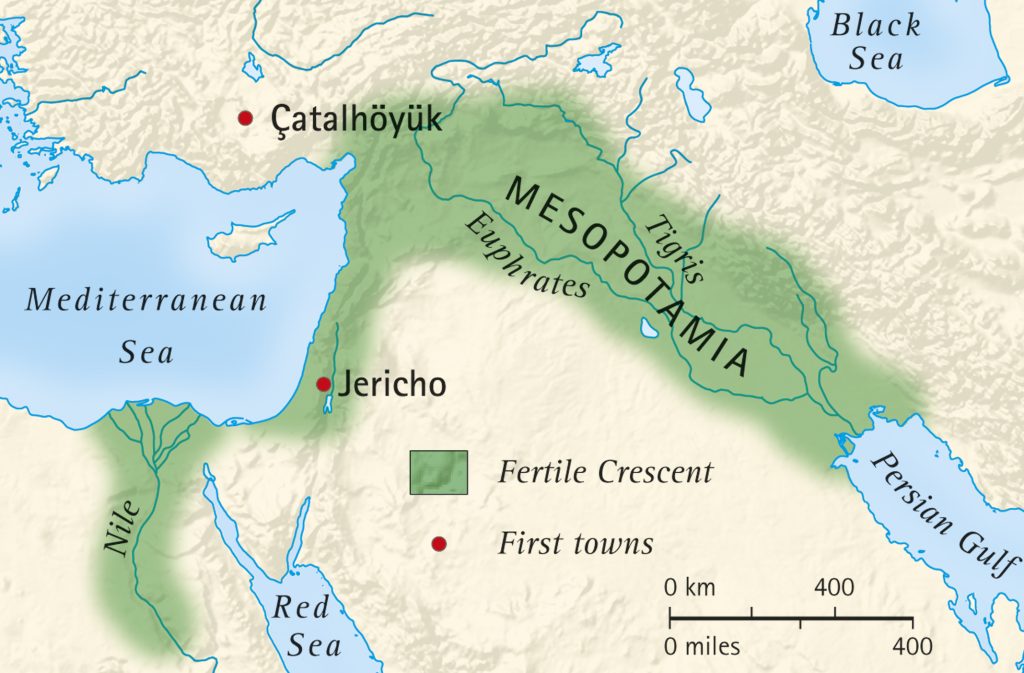Chapter 8.2: Introduction to Ancient and Classical Art
Introduction to Ancient and Classical Art (ca. 3000 B.C.E. to ca. 400 C.E.)
This period includes the great early civilizations of the ancient Near East (think Babylonia), ancient Egypt, ancient Greece, the Etruscans, and the Romans—everything that came after the invention of writing and before the fall of the Roman Empire. Keep in mind the disintegration of the Roman Empire took centuries, but to simplify, c. 400 will do.
Ancient Near East

The Cradle of Civilization
Mesopotamia, the area between the Tigris and Euphrates Rivers (in modern-day Iraq), is often referred to as the cradle of civilization because it is the first place where complex urban centers grew. However, Mesopotamia’s history is tied to the greater region, comprised of the modern nations of Egypt, Iran, Syria, Jordan, Israel, Lebanon, the Gulf states, and Turkey. We often refer to this region as the Near or Middle East.
The Sumerians, Akkadians, Assyrians, and Babylonians dominated Mesopotamia from the beginning of written history (c. 3100 BC) to the fall of Babylon in 539 BC. Here are some important objects we have from them and what they tell us of their cultures: Standing Male Worshipper from Tell Asmar and The Law Code Stele of King Hammurabi.
Videos
Standing Male Worshipper from Tell Asmar (4:48)
The Law Code Stele of King Hammurabi (3:32)
Candela Citations
- Ancient West Asia: Cradle of civilization. Authored by: Dr. Senta German. Provided by: Smarthistory. Retrieved from: https://smarthistory.org/ancient-near-east-cradle-of-civilization/. License: CC BY-NC-SA: Attribution-NonCommercial-ShareAlike

